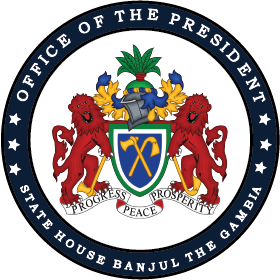OBJECTIVE
The National Export Strategy (NES) was designed as a practical roadmap for The Gambia to achieve increased levels of economic development, by focusing its limited but valuable resources on developing export capacity in those priority sectors for which The Gambia has the greatest potential for export development.
CONTENT
The specific goals and expected targets from effective delivery of the National Export Strategy 2020–2025 are as follows:
- To build a stronger, more responsible, robust, and resilient economy
- To diversify export markets
- To move the economy up the value chain through higher value-generating export activities
- To improve the brand image of The Gambia in the international markets and to showcase The Gambia as a quality exporter of strategic products
- To use exports as a tool to alleviate poverty through high-value job creation
- To attract more foreign direct investment in the priority sectors, particularly for high value-generating activities
- To create a more inclusive economy that invests in and values human capital
- To drive resilience through sound export strategies
- To encourage and facilitate innovation
The core strategies of the NES include:
- To effectively use the River Gambia as a key transportation and trade growth pole
- To increase air cargo capacity
- To encourage and facilitate the provision of cold storage at export points for the fish and horticulture sectors
- To reduce air freight costs
- To improve the quality and efficiency of transportation networks from source to warehouse to port and beyond
- To improve the quality and efficiency of shipping
- To enhance domestic logistics
- To make Companies e-commerce ready
- To improve post-harvest logistics and handling
- To offer banks risk guarantees
- To promote cooperation through creating intermediary entities and improving procedures
- To improve legal framework for contract enforcement
- To reduce the costs of access to finance
- To enhance existing financial instruments
- To create and structure a production/export development fund
- To establish and structure export credit and trade insurance mechanisms
- To ensure effective co-ordination and an operational network of quality management (QM) providers
- To foster a culture of quality
- To ensure quality production inputs
- To provide technical support and assistance to enterprises
- To assist firms to take advantage of new trends and improve competitiveness through quality standards and compliance
- To provide adequate infrastructure for quality management
- To create and build a sustainable adaptive educational system to respond to the changing needs of the export sector
- To build skills within the priority sectors to increase efficiencies and competitiveness in key areas of production and business management
- To build skills for competitiveness
- To build skills for economic resilience/ resilient entrepreneurship
Strategy
Sectors
-
Ministry of Public Service
7 documents -
Office of The Vice President
3 documents -
Ministry of Agriculture, Livestock and Food Security
8 documents -
Ministry of Basic and Secondary Education
2 documents -
Ministry of Defence
3 documents -
Ministry of Environment, Climate Change and Natural Resources
9 documents -
Ministry of Finance and Economic Affairs
11 documents -
Ministry of Foreign Affairs and International Cooperation
2 documents -
Ministry of Health
30 documents -
Ministry of Higher Education, Research, Science and Technology
3 documents -
Ministry of Communications and Digital Economy
24 documents -
Ministry of Interior
3 documents -
Ministry of Justice
1 document -
Ministry of Petroleum and Energy
5 documents -
Ministry of Trade Industry and Employment
8 documents -
Ministry of Transport Works and Infrastructure
3 documents -
Ministry of Tourism and Culture
3 documents -
Ministry of Women, Children and Social Welfare
12 documents -
Ministry of Youths and Sports
2 documents -
Ministry of Land and Regional Government
1 document -
Ministry of Fisheries and Water Resources
3 documents -
Office of The President
0 documents

